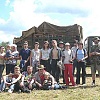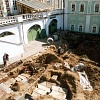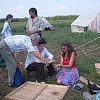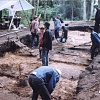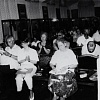Archeological Expeditions in Rat’kovo
In 1996, expedition of the Sergiev Posad Museum discovered the Rat’kovo ground burial field on Dubna river.
Аrcheological excavations and surveys in the Trinity-St. Sergius Lavra
Аrcheological excavations and surveys in the Trinity-St. Sergius Lavra permitted to form several interesting collections.
Archaeological expedition Zamostje 2
Zamostje 2 site provided rich material.
The excavations of Kikino hillfort on the Velya river.
Rare bronze age items were found during the excavations of several sites and burial fields.
The results of the expeditions
The results of the expeditions were published in articles, reported at the conferences, displayed at the permanent and temporary exhibitions.









